-
 Bitcoin
Bitcoin $88,210.6273
1.11% -
 Ethereum
Ethereum $1,583.4647
-3.31% -
 Tether USDt
Tether USDt $1.0001
0.01% -
 XRP
XRP $2.0863
-1.39% -
 BNB
BNB $600.3082
-0.60% -
 Solana
Solana $139.2799
-0.26% -
 USDC
USDC $0.9999
0.00% -
 Dogecoin
Dogecoin $0.1615
0.68% -
 TRON
TRON $0.2460
0.59% -
 Cardano
Cardano $0.6259
-2.11% -
 Chainlink
Chainlink $13.1442
-2.79% -
 UNUS SED LEO
UNUS SED LEO $9.1314
-2.97% -
 Avalanche
Avalanche $19.9362
-0.27% -
 Stellar
Stellar $0.2483
-0.83% -
 Toncoin
Toncoin $2.9261
-3.27% -
 Shiba Inu
Shiba Inu $0.0...01245
-1.50% -
 Sui
Sui $2.2359
1.01% -
 Hedera
Hedera $0.1707
-0.15% -
 Bitcoin Cash
Bitcoin Cash $345.2366
1.60% -
 Hyperliquid
Hyperliquid $18.5882
3.98% -
 Litecoin
Litecoin $78.9028
-0.17% -
 Polkadot
Polkadot $3.7550
-4.00% -
 Dai
Dai $1.0000
-0.01% -
 Bitget Token
Bitget Token $4.4634
-1.87% -
 Ethena USDe
Ethena USDe $0.9992
-0.01% -
 Pi
Pi $0.6331
-0.71% -
 Monero
Monero $215.2673
-0.14% -
 Pepe
Pepe $0.0...08009
3.09% -
 Uniswap
Uniswap $5.2814
-2.61% -
 OKB
OKB $50.9064
-0.56%
What is Mina protocol for blockchain?
Mina Protocol uses zero-knowledge proofs to maintain a constant 22KB size, enabling scalable, private transactions and dApps on energy-efficient PoS blockchain.
Apr 14, 2025 at 09:14 am
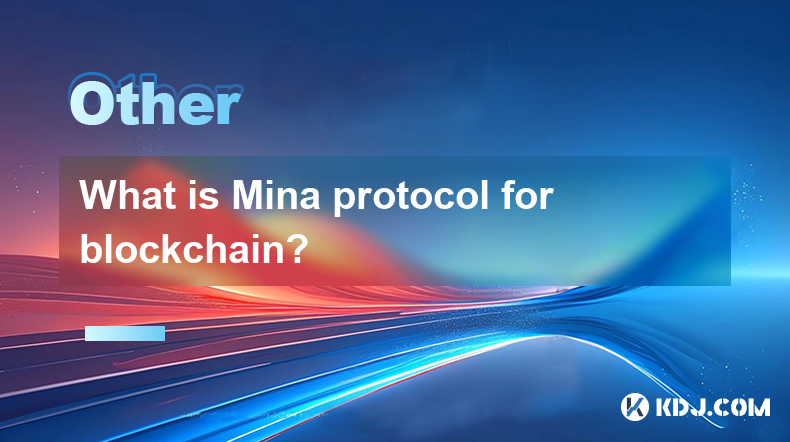
The Mina Protocol is a unique blockchain platform designed to address the scalability and accessibility issues that many traditional blockchains face. Unlike other blockchains that grow in size over time, Mina maintains a constant size of around 22 kilobytes, making it highly efficient and user-friendly. This is achieved through the use of zero-knowledge proofs (ZK-SNARKs), which allow the blockchain to compress and verify the entire history of transactions without needing to store all the data.
How Does Mina Protocol Work?
At the core of the Mina Protocol is the concept of zero-knowledge proofs. These proofs enable the network to validate transactions and the state of the blockchain without requiring nodes to store the entire history of transactions. Instead, nodes only need to store the latest state of the blockchain, which remains constant in size. This approach not only makes the blockchain more scalable but also more private and secure.
The Mina Protocol uses a Proof of Stake (PoS) consensus mechanism, which is more energy-efficient compared to traditional Proof of Work (PoW) systems. In this system, validators are chosen to create new blocks based on the amount of cryptocurrency they hold and are willing to "stake" as collateral. This incentivizes participants to act honestly, as they risk losing their stake if they attempt to validate fraudulent transactions.
Key Features of Mina Protocol
One of the standout features of the Mina Protocol is its constant size. Traditional blockchains like Bitcoin and Ethereum grow larger with each new block, which can make them cumbersome to operate and store. Mina, on the other hand, maintains a fixed size, making it easier for users to run a node on their personal devices, such as smartphones.
Another significant feature is decentralized applications (dApps). Mina supports the development of dApps, which can leverage the privacy and efficiency of the Mina blockchain. Developers can build applications that benefit from the zero-knowledge proofs, enabling them to create more secure and private solutions.
Interoperability is also a key aspect of the Mina Protocol. It is designed to be compatible with other blockchains and systems, allowing for seamless integration and data exchange. This feature enhances the utility of Mina and makes it a versatile platform for various use cases.
Benefits of Using Mina Protocol
The primary benefit of the Mina Protocol is its scalability. By maintaining a constant size, Mina can handle a high volume of transactions without the need for extensive hardware resources. This makes it an attractive option for businesses and developers looking to build scalable blockchain solutions.
Privacy is another significant advantage. The use of zero-knowledge proofs ensures that transaction details remain confidential, providing users with a higher level of privacy compared to other blockchains. This is particularly important for applications that require sensitive data handling.
The energy efficiency of the Mina Protocol is also noteworthy. By using a Proof of Stake consensus mechanism, Mina consumes significantly less energy than Proof of Work blockchains. This makes it a more environmentally friendly option and aligns with the growing demand for sustainable blockchain solutions.
How to Get Started with Mina Protocol
To start using the Mina Protocol, you will need to set up a wallet and acquire some Mina cryptocurrency. Here are the steps to get started:
- Download a Mina Wallet: You can download the official Mina wallet from the Mina Protocol website. The wallet is available for various platforms, including desktop and mobile devices.
- Create a New Wallet: Once you have downloaded the wallet, follow the instructions to create a new wallet. You will be prompted to set up a password and generate a recovery phrase. Make sure to store the recovery phrase in a safe place, as it is essential for recovering your wallet if needed.
- Acquire Mina Cryptocurrency: You can acquire Mina cryptocurrency through various exchanges that support it. Transfer the Mina to your wallet address, which you can find in the wallet application.
- Interact with the Mina Network: With your wallet set up and funded, you can now interact with the Mina network. You can send and receive Mina, participate in staking, and explore decentralized applications built on the Mina Protocol.
Use Cases of Mina Protocol
The Mina Protocol is well-suited for a variety of use cases due to its unique features. One prominent use case is private transactions. The zero-knowledge proofs enable users to conduct transactions without revealing sensitive information, making it ideal for financial applications that require confidentiality.
Another use case is decentralized identity. Mina can be used to create secure and private identity systems, where users can prove their identity without disclosing unnecessary personal information. This has applications in areas such as voting systems, where privacy and security are paramount.
Supply chain management is another area where Mina can be beneficial. The ability to verify the integrity of transactions and data without storing the entire history makes it an efficient solution for tracking goods and ensuring transparency in supply chains.
Frequently Asked Questions
Q: How does Mina Protocol ensure the security of transactions?
A: Mina Protocol uses zero-knowledge proofs to ensure the security of transactions. These proofs allow the network to verify the validity of transactions without revealing the underlying data, providing a high level of security and privacy.
Q: Can I run a Mina node on my smartphone?
A: Yes, one of the advantages of the Mina Protocol is its constant size, which allows users to run a node on their smartphones. This makes it more accessible and user-friendly compared to other blockchains that require more powerful hardware.
Q: What are the transaction fees like on the Mina Protocol?
A: Transaction fees on the Mina Protocol are generally low due to its efficient design. The exact fees can vary based on network congestion and other factors, but they are designed to be affordable for users.
Q: How does Mina Protocol compare to other privacy-focused blockchains like Monero?
A: While both Mina Protocol and Monero focus on privacy, they use different approaches. Mina uses zero-knowledge proofs to maintain a constant blockchain size and ensure privacy, whereas Monero uses ring signatures and stealth addresses. Mina's approach allows for greater scalability and efficiency, while Monero's method provides strong privacy features but can result in a larger blockchain size over time.
Disclaimer:info@kdj.com
The information provided is not trading advice. kdj.com does not assume any responsibility for any investments made based on the information provided in this article. Cryptocurrencies are highly volatile and it is highly recommended that you invest with caution after thorough research!
If you believe that the content used on this website infringes your copyright, please contact us immediately (info@kdj.com) and we will delete it promptly.
- PumpFun Has Transferred 95,934 SOL, Worth Approximately $13.34 Million, to Kraken
- 2025-04-22 11:40:14
- XenDex, a groundbreaking all-in-one decentralized exchange, is officially entering the Ripple blockchain
- 2025-04-22 11:40:14
- Barring a trade between now and June 25, the Miami Heat will have the 20th pick in the NBA Draft.
- 2025-04-22 11:35:12
- BetMGM Bonus Code WTOP1500 Unlocks a $150 Bonus or $1,500 First Bet Offer
- 2025-04-22 11:35:12
- JA Mining - a platform that makes Dogecoin mining as easy as shopping
- 2025-04-22 11:30:11
- Taiwan's Financial Supervisory Commission (FSC) Has Teamed with the Central Police University
- 2025-04-22 11:30:11
Related knowledge
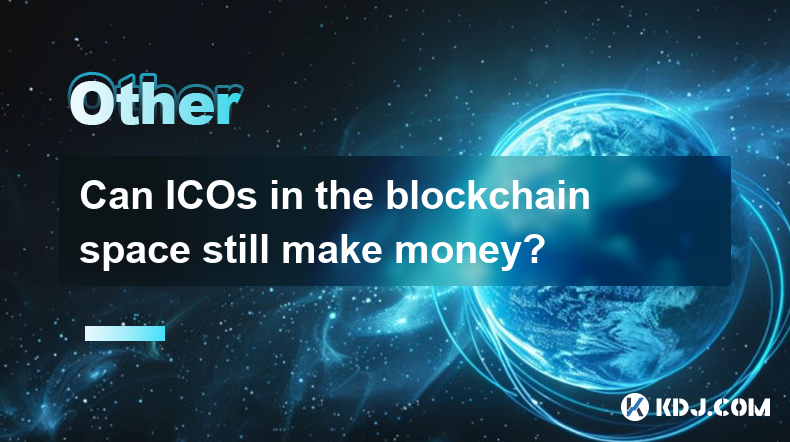
Can ICOs in the blockchain space still make money?
Apr 17,2025 at 08:29pm
The landscape of Initial Coin Offerings (ICOs) in the blockchain space has evolved significantly since their peak in 2017 and 2018. Despite the increased regulatory scrutiny and the rise of alternative fundraising methods like Security Token Offerings (STOs) and Initial Exchange Offerings (IEOs), ICOs can still be a viable way to raise funds and generat...

Can the application of blockchain in supply chain finance bring benefits?
Apr 15,2025 at 04:00pm
Can the application of blockchain in supply chain finance bring benefits? The integration of blockchain technology into supply chain finance has garnered significant attention in the cryptocurrency and financial sectors. This article explores how blockchain can potentially revolutionize supply chain finance, detailing its benefits and providing a compre...
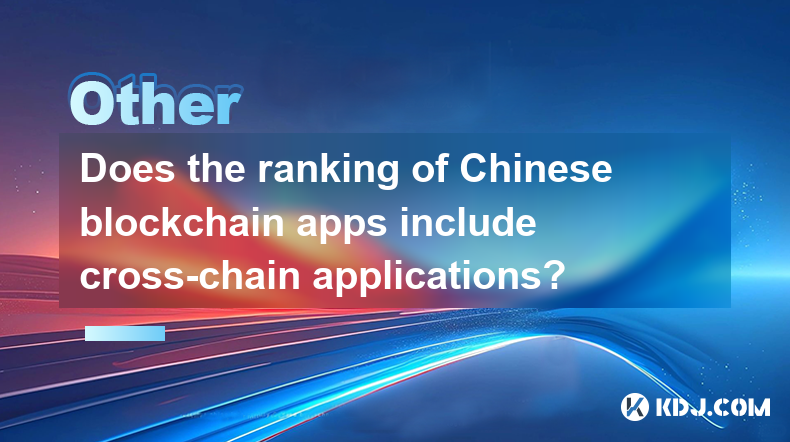
Does the ranking of Chinese blockchain apps include cross-chain applications?
Apr 14,2025 at 04:00pm
The ranking of Chinese blockchain apps is a comprehensive evaluation that takes into account various aspects such as user base, transaction volume, and technological innovation. A pertinent question arises regarding whether these rankings include cross-chain applications. Cross-chain applications, which allow different blockchain networks to interact an...
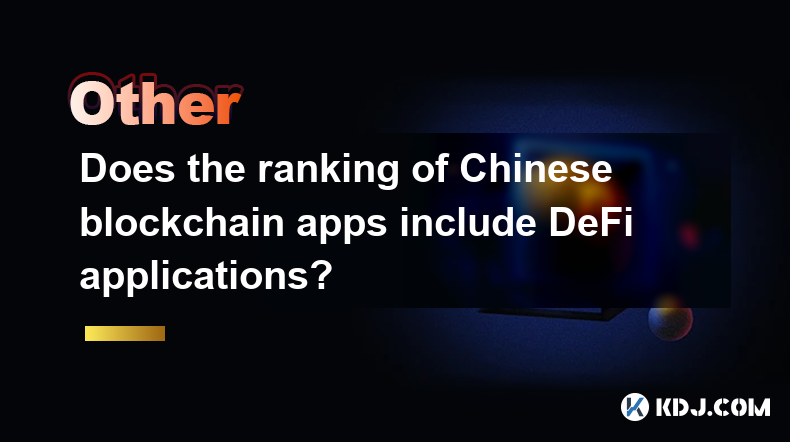
Does the ranking of Chinese blockchain apps include DeFi applications?
Apr 15,2025 at 06:57am
The ranking of Chinese blockchain apps is a comprehensive list that showcases the most popular and influential applications within the cryptocurrency ecosystem. One question that often arises is whether these rankings include DeFi applications. To answer this, we need to delve into the specifics of how these rankings are compiled and what types of appli...
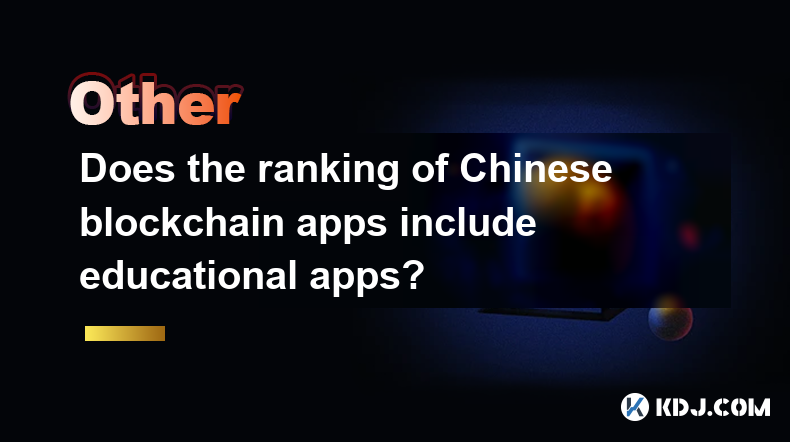
Does the ranking of Chinese blockchain apps include educational apps?
Apr 16,2025 at 03:35am
The ranking of Chinese blockchain apps often includes a variety of categories, from finance and gaming to social networking and beyond. One question that frequently arises is whether these rankings include educational apps. To address this, we need to delve into the specifics of how blockchain apps are categorized and ranked in China, and whether educat...
Does the ranking of Chinese blockchain apps include enterprise-level applications?
Apr 15,2025 at 06:42am
The ranking of Chinese blockchain apps often includes a variety of applications, ranging from consumer-focused to enterprise-level solutions. Understanding the scope and criteria for these rankings is essential to determine if enterprise-level applications are included. This article delves into the specifics of how Chinese blockchain app rankings are co...

Can ICOs in the blockchain space still make money?
Apr 17,2025 at 08:29pm
The landscape of Initial Coin Offerings (ICOs) in the blockchain space has evolved significantly since their peak in 2017 and 2018. Despite the increased regulatory scrutiny and the rise of alternative fundraising methods like Security Token Offerings (STOs) and Initial Exchange Offerings (IEOs), ICOs can still be a viable way to raise funds and generat...

Can the application of blockchain in supply chain finance bring benefits?
Apr 15,2025 at 04:00pm
Can the application of blockchain in supply chain finance bring benefits? The integration of blockchain technology into supply chain finance has garnered significant attention in the cryptocurrency and financial sectors. This article explores how blockchain can potentially revolutionize supply chain finance, detailing its benefits and providing a compre...

Does the ranking of Chinese blockchain apps include cross-chain applications?
Apr 14,2025 at 04:00pm
The ranking of Chinese blockchain apps is a comprehensive evaluation that takes into account various aspects such as user base, transaction volume, and technological innovation. A pertinent question arises regarding whether these rankings include cross-chain applications. Cross-chain applications, which allow different blockchain networks to interact an...

Does the ranking of Chinese blockchain apps include DeFi applications?
Apr 15,2025 at 06:57am
The ranking of Chinese blockchain apps is a comprehensive list that showcases the most popular and influential applications within the cryptocurrency ecosystem. One question that often arises is whether these rankings include DeFi applications. To answer this, we need to delve into the specifics of how these rankings are compiled and what types of appli...

Does the ranking of Chinese blockchain apps include educational apps?
Apr 16,2025 at 03:35am
The ranking of Chinese blockchain apps often includes a variety of categories, from finance and gaming to social networking and beyond. One question that frequently arises is whether these rankings include educational apps. To address this, we need to delve into the specifics of how blockchain apps are categorized and ranked in China, and whether educat...

Does the ranking of Chinese blockchain apps include enterprise-level applications?
Apr 15,2025 at 06:42am
The ranking of Chinese blockchain apps often includes a variety of applications, ranging from consumer-focused to enterprise-level solutions. Understanding the scope and criteria for these rankings is essential to determine if enterprise-level applications are included. This article delves into the specifics of how Chinese blockchain app rankings are co...
See all articles






















































































